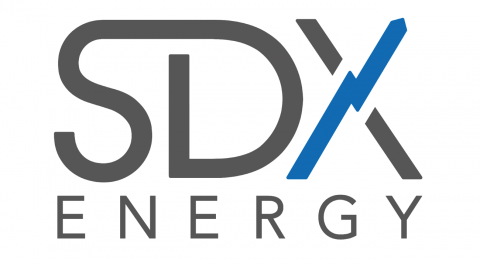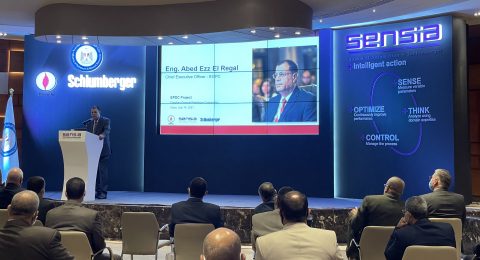Who is running your rigs? Who keeps them operating? These are questions that may well be at the forefront of your mind as you see the age of your experienced electricians and mechanics moving up
Your training aim is to achieve an increase in the skills and experience of your workforce. All training needs to be relevant and specific to the rig equipment that your people need to maintain. Of course, a training matrix with the required courses can be used merely as a tick-box exercise for your current client or the next one. These matrices often cover the minimum requirements and leave trade-specific training in the “as-needed” box. The required rig-specific training can be easily missed if the tick-box compliance route is taken in isolation.
However, a training program that provides a career structure, introduces newcomers to the industry and turns them into experienced and solid team members of the drilling rig maintenance crew can only be beneficial. The winners in such a program are the drilling company for having a better standard of maintenance personnel, the employee as he can see a career path with clearly defined training courses, the rig equipment that receives better maintenance and suffers less downtime, and the client who can be certain that the crew is receiving adequate training and field experience. In other words, winners are all around.
The indefinable effects of a proper training program are that the company is regarded as progressive, a good company to work for and one that is focused on the local workforce. These effects cannot be easily calculated for the balance sheet, but as one of our clients said, “A contractor that retains his staff and considers long-term assets is always worth a second look.”
A defined training program is not just a bunch of courses thrown together. A training program should be conceived and constructed to match the requirements of the industry’s existing levels of competency. But how would you define this? One method is to define where you want to be. Taking each pocket of the company in isolation is not always an effective way to achieve an overview of the best place to be. So, where do you want to be?
In order to find that out, the following components need to be considered:
-
The company should make policies to ensure that the people can work and operate the equipment in a safe manner.
-
The equipment needs to be more effective and operationally efficient.
-
The people who operate and maintain the equipment need to know how to use and maintain it.
This can be graphically represented by means of three circles:
The cloud in Figure 1 represents the Safe Zone, the area where everyone wants to be. How do we get there? With better equipment the circle moves to the right. With refined policies the circle moves to the left. By training the people to be competent at their job the circle moves up.
Once all three circles have moved in the right direction, there is an overlap: the Golden Triangle, the place where we want to be. Of the three components, people are the variable factor. Equipment is basically the same on any rig; policies are the same on rigs of one and the same company. It is only the people that make a significant difference between one drilling unit and another. The training of people, if undertaken correctly, can have a highly positive effect on the rig’s operational standards.
Historically, training of skilled tradesmen was done by means of an apprenticeship where experience was handed down and classroom work was undertaken to gain theoretical knowledge. By being taught both sides of the trade, the trainee became a safety-conscious and effective team member. By looking at the way the ModuSpec Academy is constructed it is obvious that it mirrors the apprentice schemes that are now, in general, a thing of the past. It should be noted that an apprenticeship in oilfield drilling equipment was always an unusual thing in the first place.
ModuSpec’s experience with training programs has proven that this method of obtaining information and gaining experience is highly effective. The following example illustrates this. One of our training sessions produced an unusual effect. As is expected by both ModuSpec and the client company, trainees asked rig-experienced crew members to help them with their assignments only to find that some of the rig staff did not know the answers themselves. The rig-experienced crewmembers requested their company to be sent to the training course to ensure the rig would have all the up-to-date information and to expand the company’s know-how.
At another training session one candidate asked an equipment-specific question. The whole class started to discuss the issue, which turned out to be a common fault on the equipment. The way each rig crew had tried to overcome the problem was openly discussed. The next day several hard drives and data sticks were produced and information was exchanged. At the start of the course, the candidates in the class did not know each other personally, but now they exchanged e-mail addresses and created a network to overcome equipment problems they face every day. How would you calculate this value for your company? In conclusion: training is not just spouting information; it is about making the candidates get in contact and start discussions with each other.
At each of the three stages, examinations are taken allowing benchmarking of the candidates developing themselves throughout the programme. These marks can then be easily transferred into the company’s training and personnel files. The exams are marked independently and used as an unbiased assessment of each candidate.
Experience is not gained instantly, it takes time to grow. The length of this time depends on the candidate and his exposure to the rig equipment. Therefore, the speed at which the candidate progresses through the programme cannot be clearly predefined. Carrying out assignments on the rig takes rig time, and so does being exposed to the equipment and conducting all the maintenance tasks that go with it.
An apprenticeship normally takes four years, which is similar to the time required to move through the Academy from the first entry introduction to the end of the advanced course. With this kind of commitment, both in time and effort, the candidate and company show their commitment to each other in the long run. Retention of trained staff is not only achieved by the height of the salary. Long-term prospects and defined training programmes can be an advantage, possibly an advantage over a competitor.
ModuSpec works closely with the client to ensure that the provided training is effective. By using company rigs, the company has its own standards, policies and equipment worked on and the employees are trained on equipment that may not just be generic, but entail complete systems.
The ModuSpec Academy has been set up to be your partner in providing knowledge, expertise and high-quality training services within the drilling industry.
By: Alan Macfarlane, Academy Trainer, ModuSpec Engineering (International) B.V.









